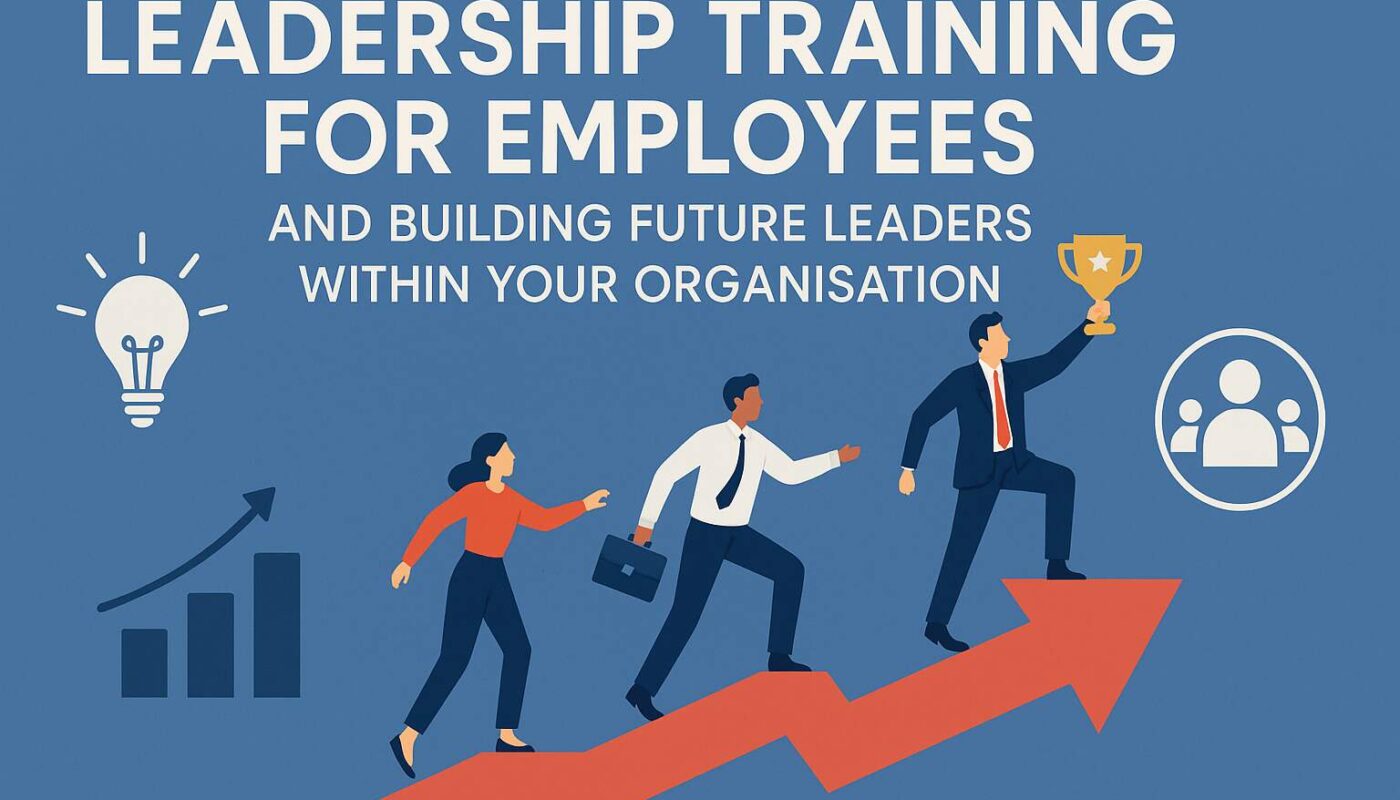In today’s volatile and fast-changing work environment, organisations that thrive are those that invest in their people. Especially their future leaders.
Yet, many companies still underestimate the long-term ROI of leadership training programs for employees.
According to Zippia, only 5% of businesses provide leadership development at all levels. That’s not just a missed opportunity – it’s a strategic gap that can hold back growth, innovation, and culture transformation.
So how can organisations close this gap? And what does it really take to start building future leaders from within?
Let’s unpack the strategic value of leadership training for employees, why it matters now more than ever, and how you can choose the right program to make a real difference.
Why Leadership Training Is a Strategic Priority
The context around organisations is constantly shifting – sometimes subtly, sometimes drastically. Navigating these shifts requires strong, adaptive, and emotionally intelligent leaders at every level.
But leadership isn’t innate. It’s learned, practiced, and developed over time.
Effective leadership training programs for employees are designed to build foundational and advanced capabilities such as:
- Decision-making under pressure
- Emotional intelligence and empathy
- Change leadership and stakeholder influence
- Vision-setting and team alignment
- Conflict resolution and coaching skills
Whether your talent is new to management or preparing for executive responsibilities, leadership training for employees ensures they’re equipped to perform and lead at the next level.
What Does a Good Leadership Training Program Look Like?
Not all leadership training is created equal. Some programs offer theoretical models with little real-world application. Others focus solely on executives and neglect emerging talent.
To truly invest in building future leaders, look for programs that:
- Address individual thinking and behavioral styles
- Encourage real-time reflection and feedback
- Integrate tools like personality assessments, 360-degree reviews, or case studies
- Provide practical models to apply in team and organisational contexts
- Support long-term transformation, not just one-time learning
At MARG, we often use frameworks like Emergenetics and PROSCI’s Change Management methodology to help leaders understand not only what to do but how to do it in dynamic work environments.
3 Ways Leadership Training Impacts Your Organisation
Here’s how intentional, well-structured leadership training programs for employees can directly contribute to organisational performance:
1. It Fosters a Culture of Ownership
When employees feel empowered through structured learning, they’re more likely to take accountability, contribute ideas, and commit to organisational goals.
Training enhances self – awareness – a critical trait for any leader. As they better understand their motivations and behavioral tendencies, leaders are more prepared to manage others with empathy and precision.
2. It Enables Effective Change Management
Leadership is synonymous with change. Whether it’s driving digital transformation, restructuring teams, or improving customer experience, your leaders must know how to inspire and manage change.
Leadership training for employees introduces key strategies such as:
- Stakeholder mapping
- Communication planning
- Managing resistance
- Influencing across the matrix
These are crucial for navigating complex transitions with minimal disruption.
3. It Builds Internal Leadership Pipelines
Hiring external leadership talent can be expensive and culture-disruptive. Building your own bench strength through leadership training programs for employees is not only cost-effective but more sustainable.
Employees already aligned with your values and mission are better positioned to lead future initiatives. Investing in their development sends a powerful message: We grow from within.
How to Choose the Right Training Partner
When choosing a leadership development partner, here’s what you should look for:
- Customisation: Can the program be tailored to your industry, roles, or strategic goals?
- Scalability: Can it be rolled out across functions or geographies over time?
- Proven Methodologies: Does it leverage evidence-based tools like the ADKAR® Model, Emergenetics, or Emotional Intelligence frameworks?
- Practical Application: Will participants walk away with actionable insights they can implement immediately?
At MARG, we specialise in designing high-impact, experiential leadership training programs for employees that blend theory, real-world relevance, and personal reflection. Whether virtual, in-class, or outbound, our programs are built for transformation.
Real Transformation Starts from Within
Here’s what we’ve learned after 18+ years of helping organisations lead better: your future leaders are already in the building. They just need the opportunity and the tools to rise.
Building future leaders is not just about succession planning. It’s about shaping a culture of agility, innovation, and human-centric leadership. It’s about moving from transactional management to transformational leadership.
And that starts with commitment from both the organisation and the individual.
Ready to Invest in the Leaders of Tomorrow?
If your organisation is looking to turn potential into performance, it’s time to rethink how you build leadership.
MARG’s customised leadership development journeys are built to prepare your people for the real challenges of tomorrow – ulture shifts, digital disruptions, and business transformation.
Whether you’re starting small with one team or rolling out a company-wide initiative, we’ll work with you to create the right impact.
👉 Let’s talk about how we can help you build the leaders your organisation needs.
Contact us to explore a leadership journey tailored for your business.



